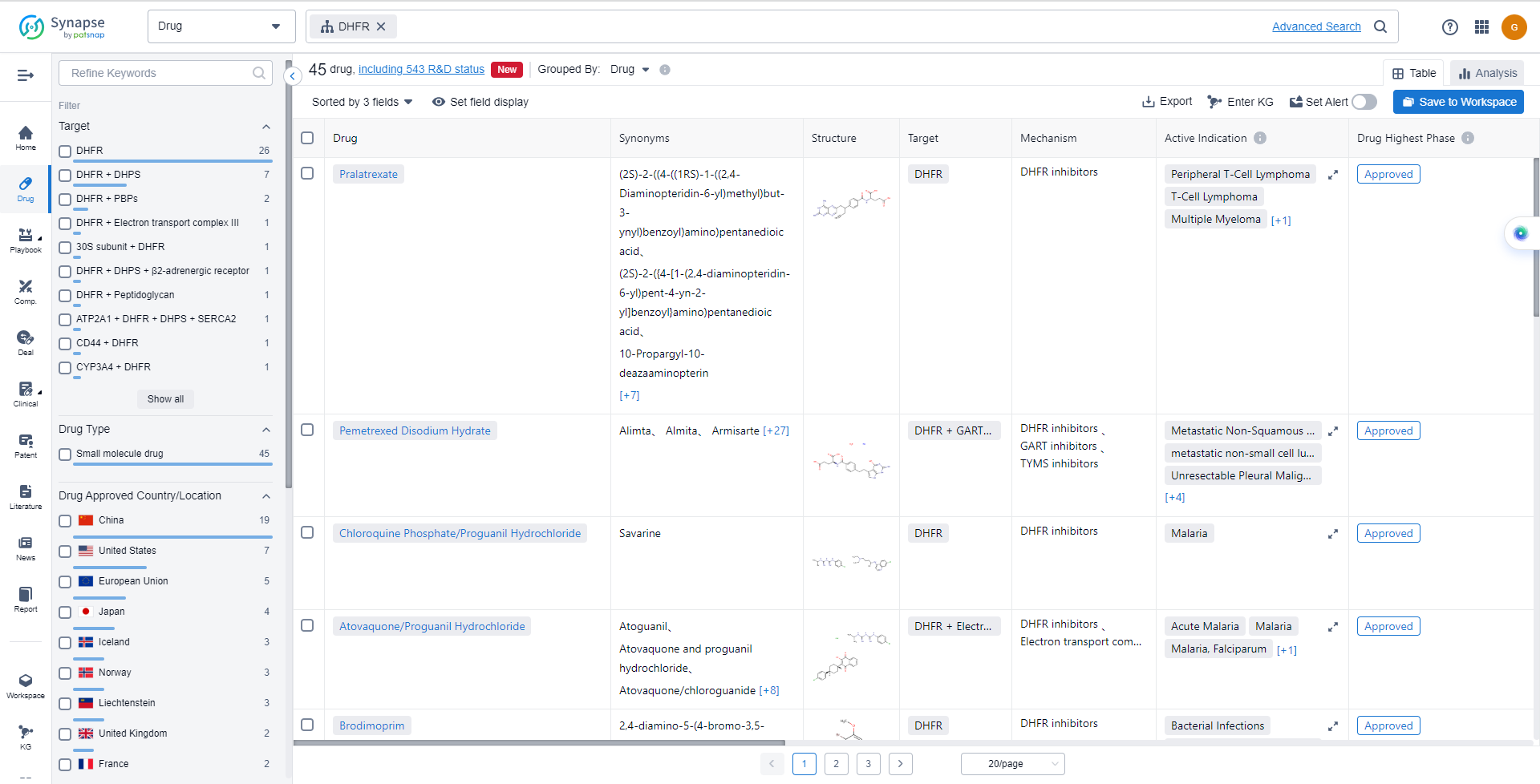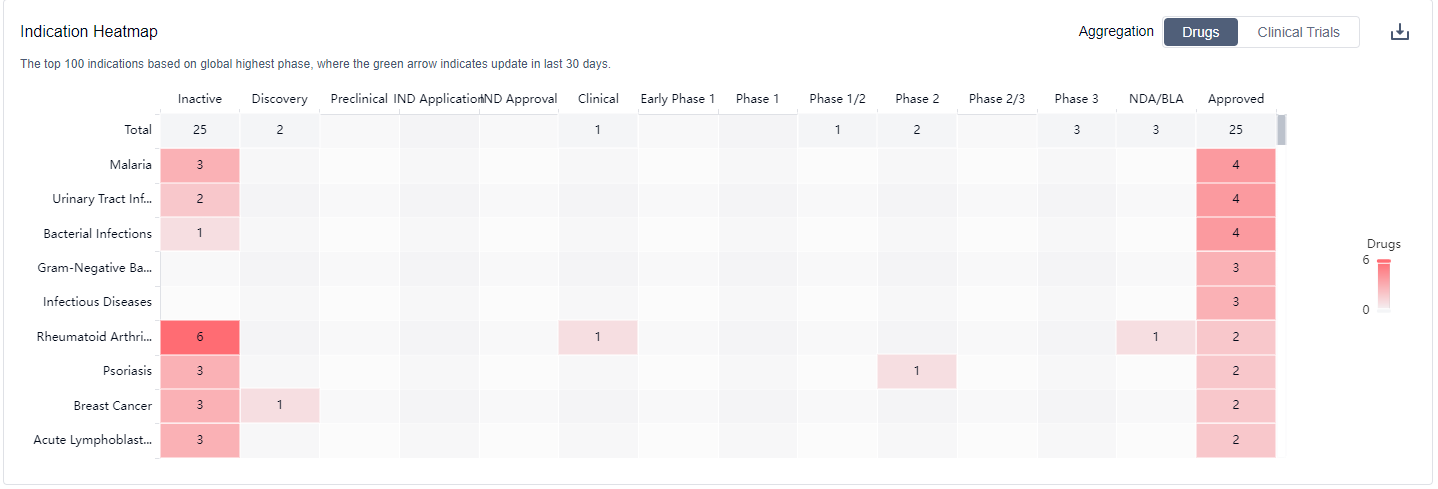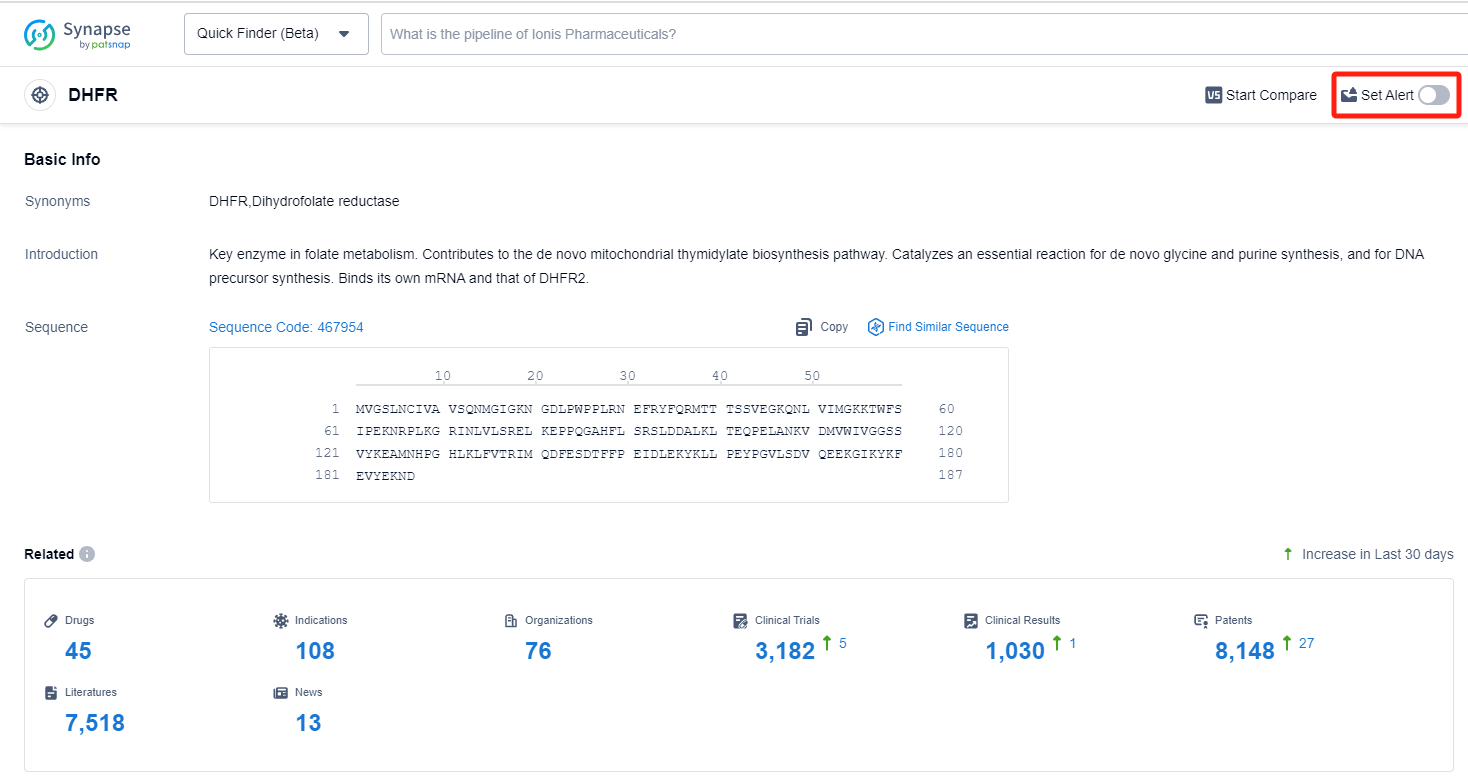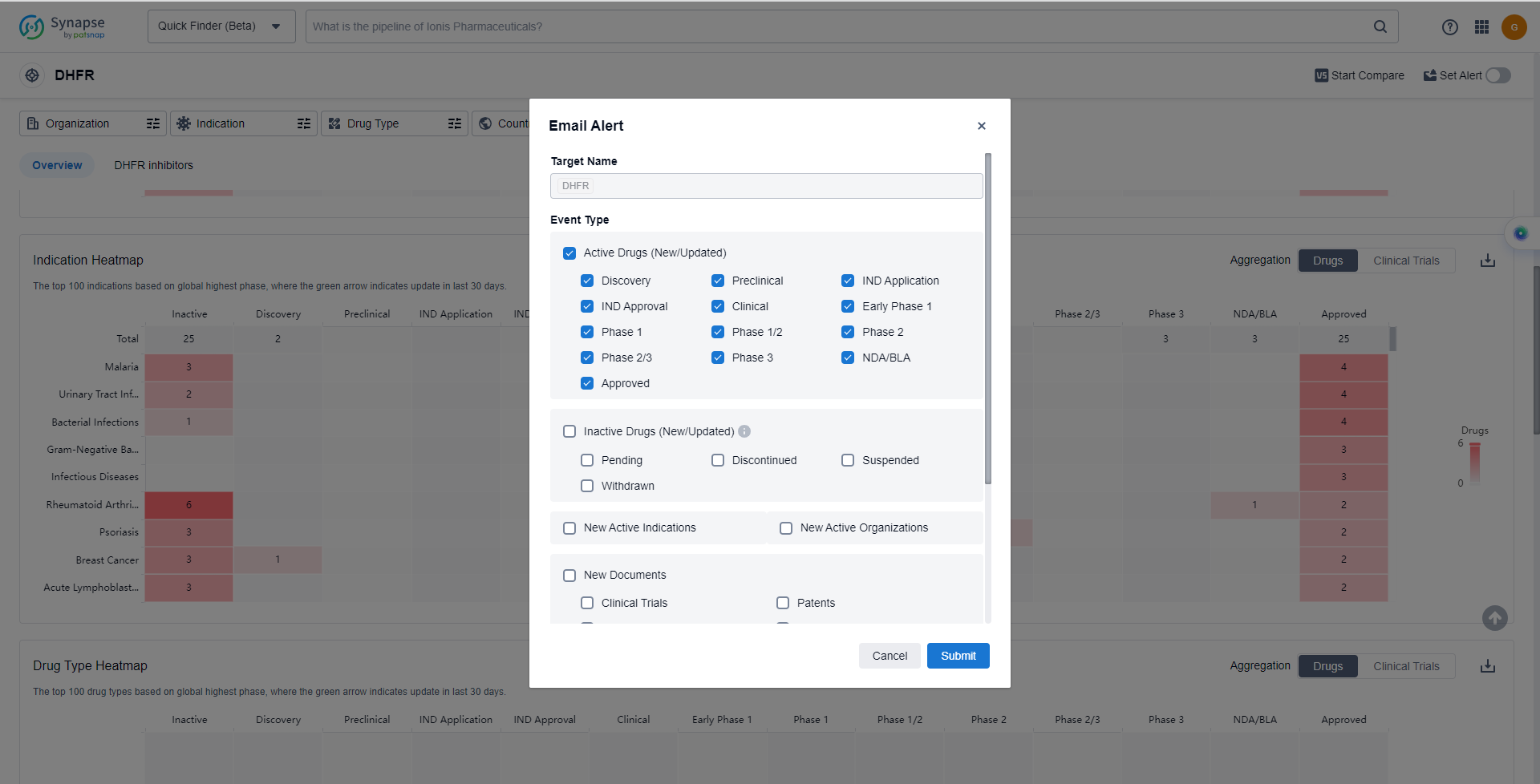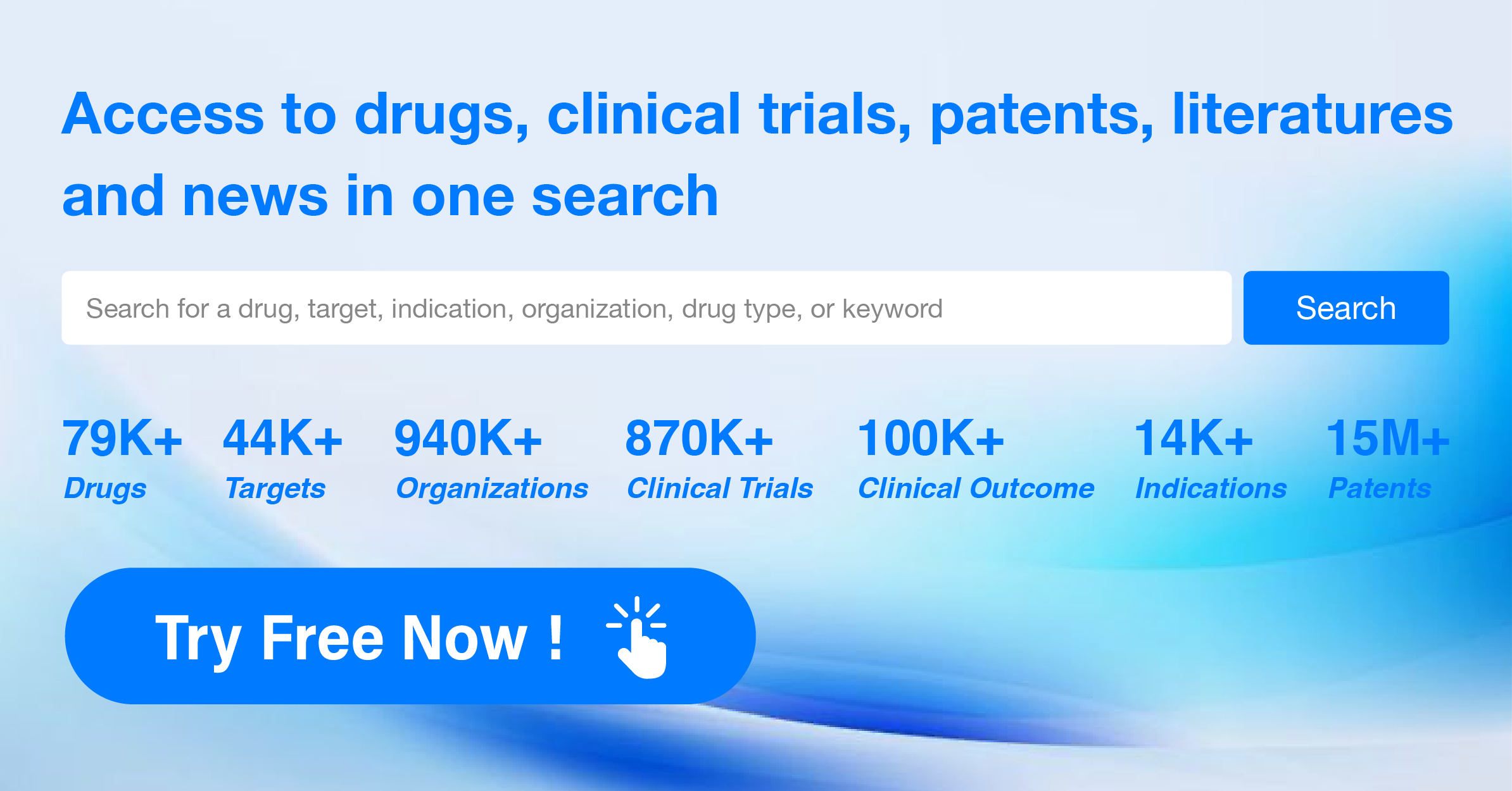What are DHFR inhibitors and how do you quickly get the latest development progress?
DHFR, or dihydrofolate reductase, plays a crucial role in the human body as an enzyme involved in the synthesis of DNA, RNA, and amino acids. It catalyzes the conversion of dihydrofolate (DHF) to tetrahydrofolate (THF), a vital coenzyme required for the production of nucleotides. THF is essential for cell division, growth, and repair, making DHFR an important target for pharmaceutical interventions. Inhibition of DHFR activity can disrupt the folate metabolism pathway, leading to impaired DNA synthesis and cell proliferation. Consequently, DHFR inhibitors are widely used in chemotherapy to treat cancer and other diseases characterized by excessive cell growth.
In cancer treatment, a good and effective DHFR inhibitor should not only possess a strong affinity with reductase but also be highly specifically taken up by transport proteins. The binding capability of these compounds with DHFR may slightly decrease. However, their affinity with the RFC transport protein is enhanced, enabling them to inhibit tumor growth equivalently as Methotrexate. The efficient binding of RFC transport protein with its folic acid analogs presents new prospects for tumor treatment. Malignant cells would overexpress RFC transport protein to ensure their continuously growing demand for folic acid is met. Apart from serving as chemotherapeutic drugs for tumors, anti-folate inhibitors such as Methoxybenzylpyrimidine27.19 exhibit antibacterial activity due to their capability of directly inhibiting the corresponding bacterial reductase.
The analysis of the target DHFR reveals a competitive landscape with multiple companies actively developing drugs. Pfizer Inc., medac Gesellschaft für klinische Spezialpräparate mbH, Sunflower Pharmaceutical Group Co., Ltd., and Spectrum Pharmaceuticals, Inc. are the companies growing fastest under this target. The highest stage of development for the target DHFR is the approved phase, with small molecule drugs being the most rapidly progressing drug type. The approved indications for drugs targeting DHFR include Malaria, Urinary Tract Infections, Bacterial Infections, and several others. China is the country with the fastest development under the target DHFR, followed by the United States, the European Union, and Japan. The future development of the target DHFR is expected to continue with a focus on small molecule drugs and expanding indications.
Unveiling DHFR Inhibitors: A Potent Weapon in Treating Cancer and Microbial Infections
DHFR inhibitors are a type of medication or compound that specifically target and inhibit the activity of dihydrofolate reductase (DHFR). DHFR is an enzyme that plays a crucial role in the synthesis of DNA, RNA, and proteins by catalyzing the conversion of dihydrofolate (DHF) to tetrahydrofolate (THF), which is an essential cofactor in these biological processes.
From a biomedical perspective, DHFR inhibitors are commonly used in the treatment of various diseases, particularly cancer and microbial infections. By inhibiting DHFR, these inhibitors disrupt the production of THF, leading to a depletion of folate levels in cells. Since folate is necessary for the synthesis of nucleotides, which are building blocks of DNA and RNA, inhibiting DHFR effectively impairs the growth and proliferation of cancer cells or pathogenic microorganisms.
DHFR inhibitors can be classified into different types based on their chemical structures and mechanisms of action. Some examples include methotrexate, trimethoprim, and pyrimethamine. These inhibitors are often used in combination with other drugs or therapies to enhance their effectiveness and minimize the development of drug resistance.
It is important to note that DHFR inhibitors may have side effects, and their usage should be carefully monitored by healthcare professionals. Additionally, the specific indications and dosages of DHFR inhibitors may vary depending on the disease being treated and the patient's individual characteristics.
List of DHFR Inhibitors
The currently marketed DHFR inhibitors include:
- Pralatrexate
- Pemetrexed Disodium Hydrate
- Chloroquine Phosphate/Proguanil Hydrochloride
- Atovaquone/Proguanil Hydrochloride
- Brodimoprim
- Gentamicin Sulfate/Trimethoprim
- Sulfamethoxazole/Sulfadiazine/Trimethoprim
- Cefalexin/Trimethoprim
- Pyrimethamine/Sulfadoxine
- Trimethoprim Hydrochloride
For more information, please click on the image below.
What are DHFR inhibitors used for?
DHFR inhibitors have strong potential in addressing bacterial infections and breast cancer.For more information, please click on the image below to log in and search.
How to obtain the latest development progress of DHFR inhibitors?
In the Synapse database, you can keep abreast of the latest research and development advances of DHFR inhibitors anywhere and anytime, daily or weekly, through the "Set Alert" function. Click on the image below to embark on a brand new journey of drug discovery!
